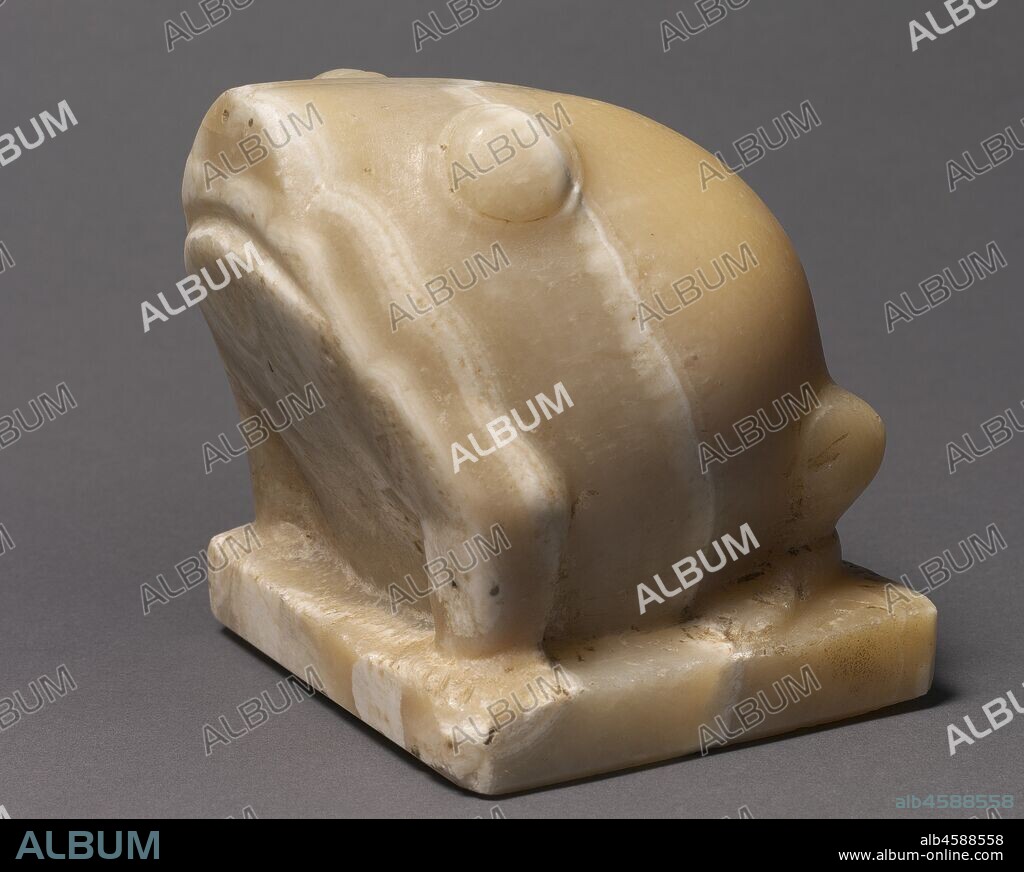alb4588558
Statue of Heqat, the Frog Goddess, c. 2950 BC. Creator: Unknown.

|
Zu einem anderen Lightbox hinzufügen |
|
Zu einem anderen Lightbox hinzufügen |



Haben Sie bereits ein Konto? Anmelden
Sie haben kein Konto? Registrieren
Dieses Bild kaufen.
Nutzung auswählen:

Titel:
Statue of Heqat, the Frog Goddess, c. 2950 BC. Creator: Unknown.
Untertitel:
Siehe automatische Übersetzung
Statue of Heqat, the Frog Goddess, c. 2950 BC. During the Predynastic period statues of animals are much more common than those of humans. This statue of a frog stands at the beginning of a great tradition of animal sculpture in Egyptian art. The sculptor has shown great sensitivity to the natural banding of the stone, using it to enhance the roundness of the animal's form. Small frogs, mostly of faience, are among the most common votive offerings deposited at early temple sites. The frog's exact religious significance in the Predynastic period is unknown, but in later times it was most often identified with Heqat, the goddess who assisted at childbirth.
Bildnachweis:
Album / Heritage Art/Heritage Images
Freigaben (Releases):
Bildgröße:
3890 x 3112 px | 34.6 MB
Druckgröße:
32.9 x 26.3 cm | 13.0 x 10.4 in (300 dpi)
Schlüsselwörter:
 Pinterest
Pinterest Twitter
Twitter Facebook
Facebook Link kopieren
Link kopieren Email
Email
